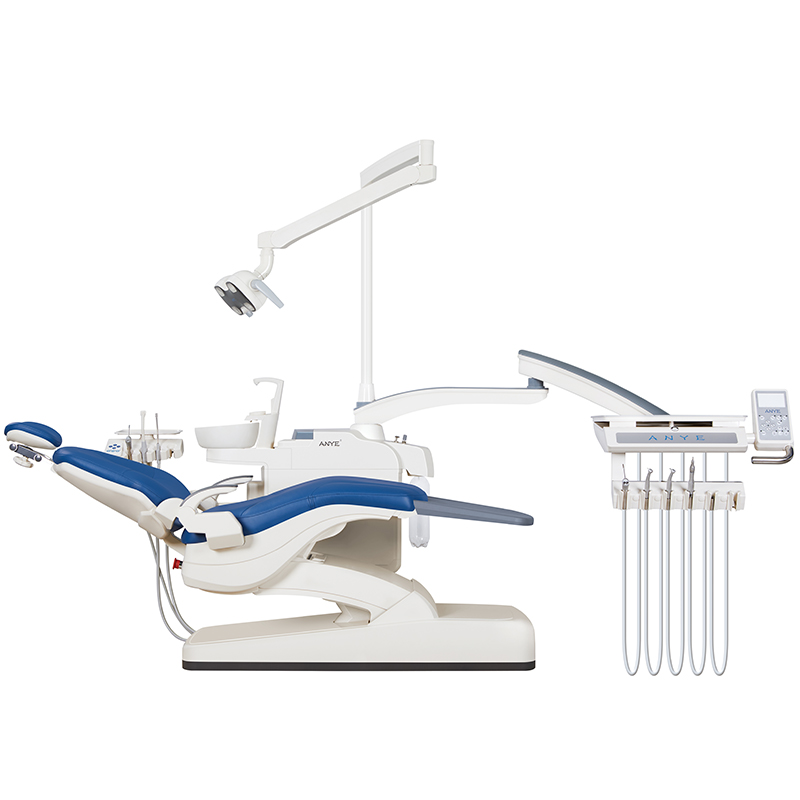Dental Patient Chair Vs Dental Operator Chair: What Is The Difference?
In the field of dentistry, the equipment utilized is critical to both patient comfort and the efficiency of dental practitioners. The dental patient chair and the dental operator chair are two crucial components of dental practice furniture. Despite their similar names, these chairs serve distinct purposes and are designed with different features to meet their specific needs.
Dental Patient Chair
The dental patient chair is primarily designed for the comfort and positioning of the patient during dental procedures. Its main function is to provide a stable platform for the patient while allowing easy access for the dentist to perform various treatments.
Key Features of a Dental Patient Chair
Adjustability: Dental patient chairs can be adjusted in a variety of ways, including height, tilt, and recline, to ensure proper positioning for patient comfort and dentist access. This adjustability is critical for accommodating different procedures, whether it’s a simple check-up or a complex surgery.
Comfort: These chairs are equipped with cushioned seats, backrests, armrests, and footrests to enhance patient comfort during lengthy procedures. The materials used are often soft yet durable, ensuring that patients feel at ease while receiving treatment.
Headrest Design: An adjustable headrest helps in positioning the patient's head correctly for different procedures. This feature is particularly important for ensuring that the dentist has unobstructed access to the oral cavity.
Traverse and Swivel Features: Some advanced models include traverse features that allow lateral movement and swivel functions for better access and ergonomics. This flexibility can significantly enhance the efficiency of dental procedures.
Upholstery: High-grade upholstery is used to ensure durability and ease of cleaning. Many dental chairs come in various colors and styles, allowing practices to maintain a cohesive aesthetic.
Purpose and Functionality
The fundamental function of a dental patient chair is to transport the oral cavity to the dentist stably and ergonomically. The design considerations focus on maintaining this objective while ensuring patient comfort. A well-designed patient chair can help alleviate anxiety, making visits to the dentist more pleasant.
Dental Operator Chair
On the other hand, the dental operator chair is specifically designed for dental professionals, including dentists and dental assistants. Its design focuses on offering ergonomic assistance to alleviate tiredness during prolonged treatments.
Key Features of a Dental Operator Chair
Ergonomic Design:Operator chairs are ergonomically designed with features like adjustable seat height, lumbar support, and armrests to support proper posture and reduce strain on the body. This design helps prevent musculoskeletal disorders that can arise from prolonged periods of sitting.
Mobility: These chairs often have wheels or casters for easy movement around the operatory. This mobility allows dental professionals to reposition themselves effortlessly during procedures without interrupting workflow.
Customizable Support: The chair may include adjustable backrests, seat angles, and armrests to accommodate different body types and preferences. This customization ensures that each practitioner can find their optimal seating position.
Foot Ring: For dental assistants, operator chairs often include a foot ring to provide additional support when seated at higher positions. This feature allows assistants to maintain stability while working closely with patients.
Purpose and Functionality
The main purpose of a dental operator chair is to provide ergonomic support for dental professionals as they perform procedures. This helps in maintaining an efficient workflow while minimizing physical strain. A well-designed operator chair can enhance productivity by allowing practitioners to focus on their work rather than discomfort.
Importance of Ergonomics in Dentistry
Both types of chairs play an integral role in promoting overall health within a dental practice. Ergonomics—the science of designing workplaces that fit human needs—applies significantly here:
For Patients: Comfortable seating arrangements can help reduce anxiety levels during visits. A well-designed patient chair allows patients to relax while receiving treatment, which can lead to better cooperation during procedures.
For Practitioners: Ergonomically designed operator chairs help reduce fatigue and discomfort over long working hours. By minimizing physical strain, dentists can maintain focus on their tasks without being distracted by discomfort or pain.
Conclusion
Both the dental patient chair and the dental operator chair play crucial roles in a dental practice. While they serve different purposes—one focusing on patient comfort and accessibility, and the other on providing ergonomic support for practitioners—they are both essential for ensuring effective and efficient dental care.
Understanding these differences can help in selecting the right equipment tailored to specific needs within a dental clinic. Investing in high-quality chairs benefits both patients and practitioners, ultimately contributing to better oral health care outcomes.



Leave a comment